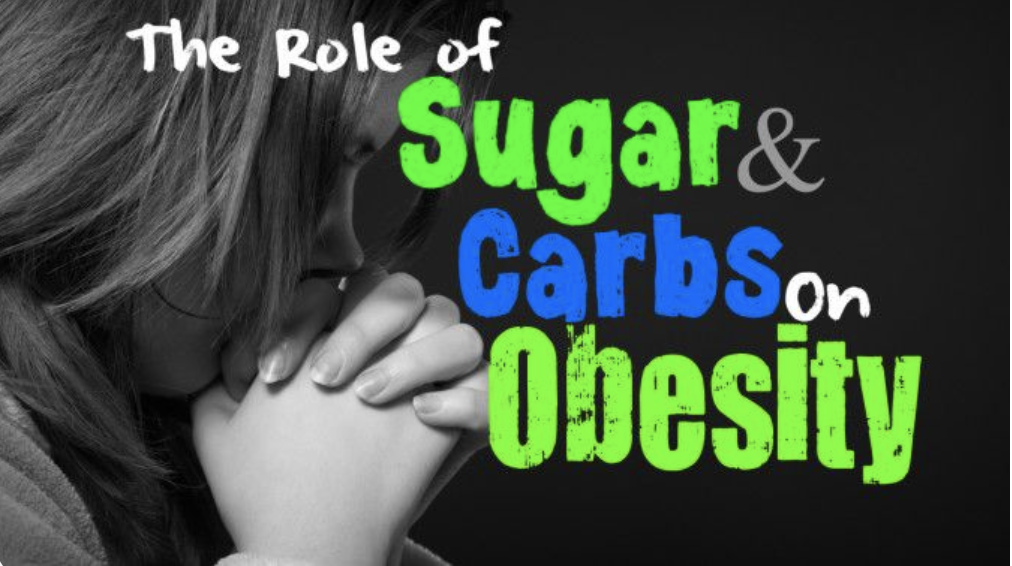The Role of Sugar and Carbohydrates on Obesity

There is an obesity epidemic in the United States. This epidemic puts over 78 million people in the high risk category. Obesity has been linked to type 2 diabetes, stroke, heart conditions and cancer.
The US based Center for Disease Control and Prevention (CDC) recently released a statement that encouraged Americans to pay attention to the obesity issue.
In order to reduce the growing obesity rates and the negative impacts on our health, we need to consider cutting carbs, “the single most effective intervention for reducing all features of metabolic syndrome.”
Being sedentary, smoking and drinking alcohol are all unhealthy and risky lifestyle choices. But the Journal of Sports Medicine warns that a high-calorie diet is responsible for more health problems and disease than physical inactivity, smoking and drinking combined.
Sugar, Glucose and Fructose
Different foods affect the body in many different ways. Sugar also known as Sucrose, especially processed sugar, makes you fatter.
Sugar and products with high fructose content are made up of just two molecules: glucose and fructose.
Glucose: Carbohydrates are sources of many important nutrients. They can be an important source of energy for the body. When we consume carbs they move through the digestion system and become glucose Glucose is a type of blood sugar. This sugar becomes the body’s fuel.
Glucose is then moved throughout the body in the bloodstream to the organs and tissue. It also plays an important role in running the metabolism. Our bodies automatically produce glucose from carbohydrates. They are a constant in the bloodstream.
Every cell in the body can use glucose for energy. If we don’t get glucose from the diet, our bodies produce what we need out of proteins and fats.
Fructose: The Fructose molecule isn’t produced by our bodies. We consume it through our food. It serves no healthy purpose.
According to researchers only a few cells can even tolerate fructose, so it gravitates to the liver. From the liver these molecules turn into fat, which is moved into the bloodstream with the healthy glucose molecules.
When they hit the bloodstream the fructose molecules (already turned to fat) become Triglycerides. If you have high triglycerides it is a sign of high cholesterol levels.
Sugar consumed in the form of natural raw fruits don’t have the same negative impacts that processed sugar has. Raw fruits are rich in antioxidants and fiber. When you eat fruit it adds very little fructose.
What is Metabolic Syndrome?
The human body is made up of a lot of complex systems which keep the metabolism on track.
When these systems break down a person may have a various conditions like high blood pressure, too much belly fat, bad cholesterol levels etc.
When you have metabolic syndrome you are at a high risk for diabetes, stroke and heart disease.
The regulation of food consumption involves several hormones and complex neural circuits. These hormones send signals to the hypothalamus which regulates food intake, and fat burning and storage.
Insulin Resistance and Weight Gain
The human metabolism plays a key role in regulating the production of blood glucose and its use as fuel for the body.
Insulin manufactured in the pancreas is the vital hormone that is responsible for the balance and regulation of glucose. Insulin sends signals to the glucose (now fat cells). It regulates the fat burning process in the human body.
Insulin is created based on how much glucose is in the bloodstream. It’s role is to keep the blood glucose levels from becoming toxic to the body.
A meal high in carbs increases the glucose levels. Too much glucose sends the signal to the create more insulin. Insulin is then sent into the bloodstream.
It is a delicate balance. Without insulin or if it doesn’t function efficiently, the blood glucose can reach toxic levels.
Most of the time this works. But over time certain cells can become immune to insulin.When this resistance takes place, the pancreas continues to create extra insulin to push the glucose into cells.
This condition is called insulin resistance. The body continues to manufacture too much insulin until type II diabetes occurs.
When insulin levels are too high for an extended period of time, the glucose (fat) is not used correctly for fuel. Instead it moves through the bloodstream and becomes deposited and stored fat.
Consuming too many carbs can also cause elevated insulin levels. Consuming too much fructose can also create insulin resistance.
Leptin Resistance and Weight Gain.
Fructose can’t be processed correctly. It becomes fat in the human body. When the body takes in too much fructose it can create problems with a hormone called leptin.
Leptin comes out of fat cells. The bigger the fat cells the more leptin it sends. Leptin sends a signal to the brain which helps it determine that it is time to store fat. This condition is called leptin resistance.
An excess of leptin should tell the brain to stop eating, because there is enough stored fat. But when the leptin regulatory is broken there is a disconnect in the signals.
The very process that is supposed to prevent obesity sends the wrong signal The body is filling up with fat and the brain keeps telling it to consume more.
Leptin Resistance and insulin resistance are both cluster conditions that can occur in metabolic syndrome. They have root causes of surrounding the intake of sugar and carbs in the body.
The sugar in our bodies may be consumed as fructose, sucrose or carbohydrates. But when the metabolism is broken it all ends up as stored fat.
The research team at the CDC reported that for each extra 150 calories you consume from sugar, you are increasing by 11 times your risk of developing diabetes.
Sources:
Vitality Online, “Overeating Sugar and Carbs Causes Obesity, Not Inactivity; You Can’t Outrun a Bad Diet” by Samantha Olson
“4 Ways Sugar Makes You Fat” by Kris Gunnars, BSc, December 2015 http://authoritynutrition.com/4-ways-sugar-makes-you-fat/